Tag: Dental Implants
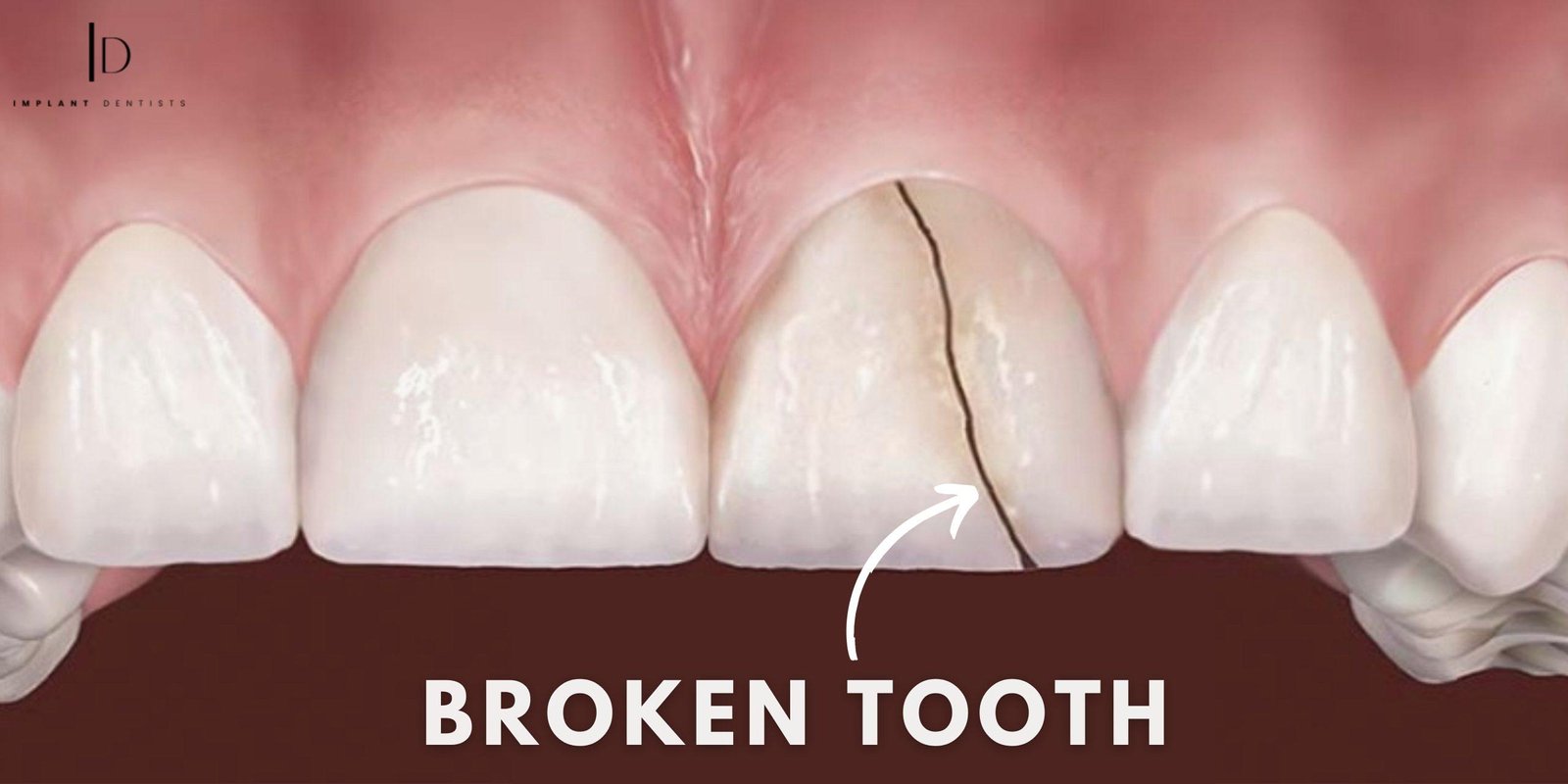
Saving Smiles| Exploring 5 Causes, Treatments & Benefits for Broken Tooth
February 5, 2024A broken tooth can be a worry and painful experience, affecting not just your oral health, but also your confidence in showcasing your smile. Fortunately, advancements in dental care have paved the way for effective broken tooth repair options. Broken tooth repair is a dental procedure designed to restore and renew a damaged or fractured tooth. It brings back functionality to the patient’s smile. Whether the result of an accident, injury, or decay, a broken tooth can cause discomfort, compromise oral health, and impact one’s confidence. Now, we’ll explore the causes of a broken tooth, available treatments, and the benefits of seeking prompt repair.
Causes of Broken Tooth
- Trauma or Injury: Accidents, falls, or sports related injuries can cause direct impact to the mouth, leading to a broken tooth. This can happen during activities like playing sports, falling, or any other situation where the mouth experiences forceful contact.
- Biting on Hard Objects: Chewing on hard substances such as ice, unpopped popcorn kernels, or non food items can lead to tooth breakage. The excessive force applied while biting down on hard objects can cause teeth to fracture or chip.
- Untreated Tooth Decay: Prolonged tooth decay weakens the structure of the tooth, making it more susceptible to breakage. When cavities are left untreated, they can progress and compromise the unity of the tooth, eventually causing it to break.
- Bruxism (Teeth Grinding): Regular teeth grinding, known as bruxism, can apply significant pressure on the teeth, leading to wear and tear. Over time, this constant grinding can weaken the coating and result in fractures or breaks in the teeth.
- Large Fillings or Weak Tooth Structure: Teeth with large fillings or those that have undergone extensive dental work may be more prone to breakage. The presence of a large filling can compromise the structural integrity of the tooth. If the filling is old or poorly done, the tooth becomes more susceptible to fractures.
Five Potential Treatments for a Broken Tooth
- Dental Bonding: Dental bonding is a common treatment for minor tooth fractures. It is often used for fractures caused by trauma or biting on hard objects. In this procedure, a tooth coloured resin is applied to the damaged tooth and then shaped and polished to restore its appearance and function.
- Fillings: If the broken tooth is a result of untreated tooth decay, a dental filling may be used to repair the damage. The decayed portion of the tooth is removed. A filling material is used to fill the cavity and restore the tooth’s structure.
- Dental Crowns: For more extensive tooth damage, such as a large fracture or a weakened tooth structure, a dental crown may be recommended. A dental crown is a custom made cap that covers the entire tooth, providing strength, protection, and restoring its appearance.
- Night Guards for Bruxism: If teeth grinding is the cause of the broken tooth, a dentist may recommend the use of a custom fitted night guard. This oral device is worn while sleeping to cushion the impact of grinding. It prevents further damage to the teeth.
- Root Canal Treatment: In cases where a broken tooth extends into the pulp, a root canal may be necessary. This involves removing the damaged pulp, cleaning and disinfecting the root canal, and then sealing it to prevent infection. After a root canal, a crown is often placed to strengthen and protect the tooth.
Benefits about Broken Tooth Treatment
- Improved Oral Health: Seeking timely broken tooth repair not only relieves pain but also contributes to overall oral health. Addressing fractures prevents the risk of infections and decay that may arise from exposed tooth pulp.
- Enhanced Aesthetics: Dental repairs, such as bonding, crowns, or veneers, go beyond functional benefits. They restore the natural appearance of the tooth. This boosts your confidence and allows you to smile freely without concerns about visible damage.
- Long-term Cost Savings: Investing in broken tooth repair can save you money in the long run. Addressing the issue promptly helps prevent further complications that may require more extensive and expensive dental procedures in the future.
- Restored Functionality: Repairing a broken tooth ensures that you can comfortably chew and eat without discomfort. This restoration of functionality is essential for proper digestion and overall well-being.
- Preservation of Natural Teeth: Certain treatments, like dental bonding and crowns, aim to preserve the natural structure of the tooth. This is advantageous compared to extraction, as it helps maintain the integrity of your natural teeth for as long as possible.
- Boosted Confidence: A healthy, well-maintained smile can significantly impact your self-esteem. By addressing a broken tooth promptly, you improve the physical aspects of your smile. You enhance your mental well-being by feeling more confident and comfortable in social situations. Address a broken tooth promptly to maintain this feeling.
- Customized Solutions: Dental professionals offer a range of repair options tailored to your specific needs. Whether it’s a minor chip or a more extensive fracture, there are personalized solutions that cater to the severity of the damage, ensuring optimal results.
Conclusion
In the journey to broken tooth repair, recognizing the causes is key. Understanding the signs and embracing the available treatment options are also important. Whether your tooth has suffered a minor chip or requires a more extensive restoration, the benefits of timely repair extend beyond pain relief. By promptly addressing a broken tooth, you not only alleviate discomfort but also prevent further damage, ensuring the longevity of your oral health. The array of treatment options, from dental bonding to implants, allows for personalized solutions tailored to your unique situation. Our dedicated dental care team is committed to delivering personalized and effective treatment for broken teeth. They help you regain confidence in your oral health with compassionate care.
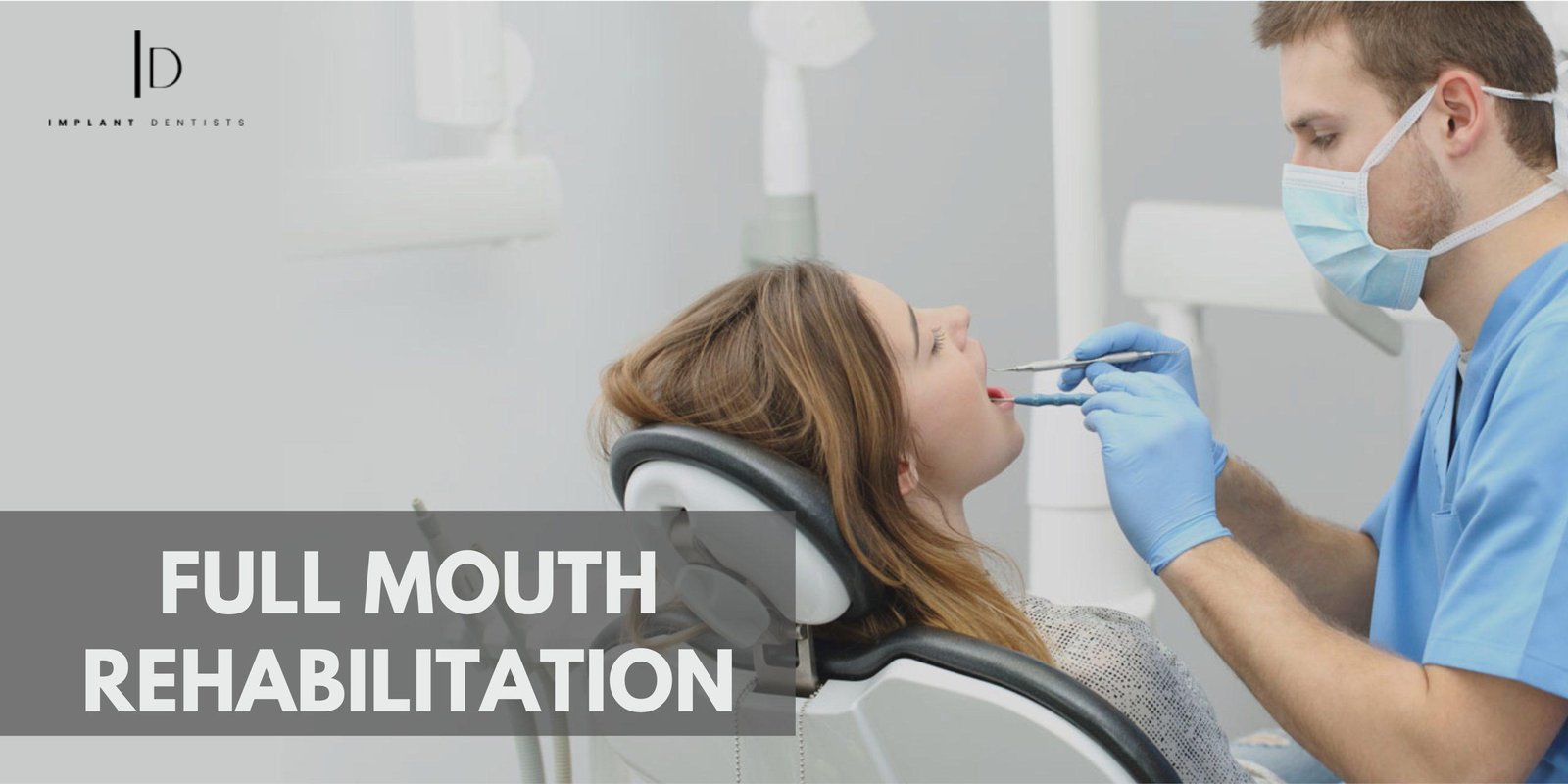
Implant Solutions for a Radiant Smile| Full Mouth Rehabilitation in Crewe, United Kingdom
January 16, 2024Full mouth rehabilitation is a comprehensive dental treatment that aims to restore oral health and functionality. In recent years, dental implants have played a pivotal role in revolutionizing full mouth rehabilitation procedures, offering patients in Crewe, United Kingdom. A lasting solution to various dental issues. Now, we explore the significance of implants in full mouth rehabilitation. The benefits they bring to individuals seeking a complete dental transformation.
Understanding Full Mouth Rehabilitation
Full Mouth Rehabilitation, also known as full mouth restoration, is a comprehensive and personalized dental procedure designed to address multiple dental issues. It restores optimal oral health, function, and aesthetics. This advanced and transformative treatment involves a meticulous combination of various dental procedures. This tailored to the unique needs of each individual.
Patients seeking Full Mouth Rehabilitation often present with a range of dental concerns, such as missing teeth, extensive tooth decay. Worn-down enamel, gum disease, bite problems, or a combination of these issues. The primary goal of Full Mouth Rehabilitation is to provide a holistic and integrated approach to address these concerns. This is ultimately enhancing both the functionality and appearance of the entire mouth.
Explore Dental Implants
Dental implants are artificial tooth roots that are surgically placed into the jawbone to support replacement teeth or bridges. There are several types of dental implants, classified based on various factors such as implant design, materials used, and the surgical procedure.
Here are some common types of dental implants:
- Single Tooth Implants: Used when a single tooth is missing, a single implant is placed into the jawbone, and a crown is attached to it.
- Multiple Tooth Implants: Used when several adjacent teeth are missing, implant-supported bridges are anchored to implants rather than natural teeth.
- Full Arch Implants: These are used when an entire arch of teeth (upper or lower) needs to be replaced. All-on-4 refer to the number of implants used to support a full arch of teeth.
- Zygomatic Implants: These implants are longer and are anchored into the cheekbone (zygoma) instead of the jawbone. They are used when there is insufficient bone in the upper jaw.
- Mini Implants: Smaller in diameter than traditional implants, mini implants are often used in situations where there is limited space or bone.
The Role of Implants in Replacing Missing Teeth
Dental implants play a crucial role in replacing missing teeth. This providing a durable and natural-looking solution for individuals with one or more missing teeth. The process involves surgically placing a metal post into the jawbone. It serves as a stable anchor for a replacement tooth or a bridge.
Here are key aspects of the role of implants in replacing missing teeth:
- Stability and Support: Dental implants offer stability and support comparable to natural teeth. The implant fuses with the jawbone through a process called osseointegration, creating a strong foundation for the replacement tooth.
- Improved Functionality: Unlike removable dentures, dental implants function like natural teeth. They allow for normal biting, chewing, and speaking, providing a higher level of comfort and functionality.
- Preservation of Jawbone: When a tooth is lost, the jawbone in that area can start to deteriorate over time due to lack of stimulation from chewing. Dental implants help preserve the jawbone by acting as artificial tooth roots and preventing bone loss.
- Natural Appearance: Implants are designed to look and feel like natural teeth. The replacement tooth, also known as a crown, is custom-made to match the colour, shape, and size of the surrounding natural teeth, ensuring a seamless and natural appearance.
- Longevity: With proper care and maintenance, dental implants have a high success rate and can last for many years, even a lifetime. This makes them a durable and long-term solution for replacing missing teeth.
Benefits of Implants in Full Mouth Rehabilitation
- Enhanced Aesthetics and Confidence: Implants provide a natural-looking appearance, restoring not only the functionality of the teeth but also the aesthetics. This, in turn, boosts confidence and self-esteem for individuals undergoing full mouth rehabilitation.
- Improved Oral Functionality: Dental implants allow for improved chewing and speaking abilities, providing patients with a level of comfort and functionality comparable to natural teeth.
- Long-Term Durability: One of the significant advantages of dental implants is their long-term durability. With proper care, implants can last a lifetime, making them a cost-effective and sustainable choice for full mouth rehabilitation.
- Stability and Strength: Dental implants provide a stable and strong foundation for the replacement of multiple teeth. This stability is crucial in full mouth rehabilitation, where the goal is to restore the entire dentition.
- Natural Feel and Functionality: Implants mimic the natural function and feel of teeth. This is particularly important in full mouth rehabilitation, as patients aim to regain the ability to bite, chew, and speak comfortably. Just like they would with natural teeth.
Conclusion:
In Crewe, United Kingdom, dental implants have become an integral part of full mouth rehabilitation, offering patients a transformative solution to various dental challenges. The combination of advanced technology and skilled dental professionals ensures that individuals seeking full mouth rehabilitation in Crewe can enjoy the benefits of a restored smile. This improved oral health, and enhanced overall well-being.

Understanding Dental Problems: Common Issues and Effective Treatments
December 12, 2023Maintaining good oral health is crucial for overall well-being. Dental problems can affect people of all ages, causing discomfort and impacting daily life. However, with advancements in dentistry, there are numerous effective treatments available for various dental issues. Now, we’ll explore common dental problems and the treatments designed to restore dental health.
Tooth Decay
Tooth decay, also known as dental caries or cavities, is a common oral health issue characterized by the gradual destruction of the tooth structure caused by acids produced by bacteria. It occurs when plaque, a sticky film of bacteria, builds up on teeth and interacts with sugars or starches from food, producing acids that attack tooth enamel.
-
Causes:
- Plaque build-up
- Poor oral hygiene
- Sugar and acid consumption
-
Treatment for tooth decay:
-
- Fluoride treatments: In the early stages of tooth decay, fluoride treatments may help remineralize the enamel and reverse the damage. Fluoride helps strengthen the enamel, making it more resistant to acid attacks.
- Dental fillings: If the decay has progressed and caused a cavity, the dentist will remove the decayed portion of the tooth and fill the cavity with materials such as composite resin, amalgam, or porcelain to restore the tooth’s structure and function.
- Dental crowns: For more extensive decay that has weakened the tooth, a dental crown may be necessary. A crown covers the entire tooth to protect and strengthen it.
Gum Disease
Gum disease, also known as periodontal disease, refers to an infection of the tissues that support and surround the teeth. It typically starts with the accumulation of plaque, a sticky film of bacteria that forms on the teeth. When plaque isn’t adequately removed through regular brushing and flossing, it can harden into tartar, which further irritates the gums.
-
Causes:
- Hormonal changes
- Smoking
- Diabetes
-
Treatment for Gum Disease:
-
- Professional Dental Cleaning: For mild cases of gum disease (gingivitis), a professional cleaning by a dentist or dental hygienist can remove plaque and tartar build-up, helping to reverse the condition.
- Scaling and Root Planing: This procedure involves deep cleaning below the gum line to remove plaque, tartar, and bacterial toxins from the root surfaces of the teeth. It helps to smooth the root surfaces, allowing the gums to reattach to the teeth.
- Medications: Antibacterial mouth rinses, antibiotic gels, or oral antibiotics might be prescribed to help control infection and promote healing.
- Surgery: In advanced cases of periodontitis, surgical treatments such as flap surgery (pocket reduction surgery), bone grafts, tissue grafts, or guided tissue regeneration may be necessary to restore damaged tissues and bone.
Tooth Loss
Tooth loss refers to the condition where one or more teeth are missing, either due to injury, decay, gum disease, or other oral health issues. Losing teeth can have significant impacts on an individual’s ability to chew food properly, speak clearly, and maintain a confident smile. It can also lead to various dental and oral health complications if left untreated.
-
Causes:
- Gum disease
- Trauma or injury
- Ageing
-
Treatment for Tooth Loss:
-
- Dental Implants: These are artificial tooth roots made of titanium that are surgically placed into the jawbone. They provide a stable foundation for replacement teeth (crowns) and can function and look like natural teeth
- Dentures: These are removable appliances that replace missing teeth and surrounding tissues. Partial dentures can replace a few missing teeth, while complete dentures are used when all teeth in an arch are missing.
- Bridges: A dental bridge consists of one or more artificial teeth anchored in place by crowns on the adjacent natural teeth. It “bridges” the gap created by missing teeth.
Oral Cancer
Oral cancer refers to cancers that develop in the mouth or oral cavity. This includes cancers of the lips, tongue, gums, inner lining of the cheeks, roof, and floor of the mouth. Oral cancer can manifest as a sore, growth, or ulcer in the mouth that doesn’t heal. Some common risk factors associated with oral cancer include tobacco use (smoking or chewing), excessive alcohol consumption, human papillomavirus (HPV) infection, prolonged sun exposure to the lips, and a diet low in fruits and vegetables.
-
Causes:
- Tobacco use
- Excessive alcohol consumption
- HPV (Human Papillomavirus)
- Sun exposure (lip cancer)
-
Treatment for Oral Cancer:
-
- Surgery: This involves removing the tumour and possibly some surrounding tissue. In advanced stages, surgery may involve removing lymph nodes in the neck as well.
- Radiation therapy: High-energy rays are used to kill cancer cells. It can be used alone or in combination with surgery or chemotherapy.
- Targeted therapy: This treatment targets specific abnormalities in cancer cells and may be used in certain cases.
Conclusion:
Dental problems can range from common issues like cavities to more severe conditions such as oral cancer. However, early detection and appropriate treatment can prevent complications and restore oral health. Regular dental check-ups, maintaining proper oral hygiene, and seeking prompt treatment for any dental concerns are essential for a healthy smile. With advancements in dental technology and various treatment options available, individuals can regain their confidence and maintain a bright, healthy smile for years to come.

What to Eat and Avoid After Getting Full Jaw Dental Implants
September 25, 2023The Road to Recovery Begins with Diet
Full jaw dental implants can be life-changing, restoring your smile and oral function. However, after the surgery, it’s crucial to pay careful attention to your diet to ensure a smooth and successful recovery. What you eat can significantly impact the healing process and the longevity of your dental implants. In this guide, we’ll explore what foods to incorporate into your post-implant diet and what to avoid for optimal results.
The Initial Days: Soft and Nutrient-Rich Choices
During the initial days after your full jaw dental implant surgery, your mouth will be sensitive, and your ability to chew will be limited. It’s essential to choose soft, nutrient-rich foods to promote healing and prevent complications. Here are some recommended options:
- Smoothies: Blended fruits and vegetables provide essential vitamins and minerals while being gentle on your new implants.
- Mashed Potatoes: Creamy mashed potatoes are easy to swallow and rich in calories, which support your energy levels during recovery.
- Yogurt: Opt for plain yogurt with probiotics to aid digestion and promote oral health. Avoid varieties with added sugars.
- Pudding and Apple sauce: These soft, easy-to-swallow treats are both satisfying and soothing for your mouth.
- Scrambled Eggs: High in protein and soft in texture, scrambled eggs are an excellent choice for a protein boost.
Building a Balanced Diet
As your healing progresses, you can gradually transition to a more varied diet while still being mindful of your implants. Here’s how to build a balanced post-implant diet:
- Protein: Incorporate lean protein sources like chicken, fish, and tofu into your diet to support tissue repair. Cut them into small, manageable pieces.
- Vegetables: Steam or sauté vegetables until they are soft enough to be easily chewed or puréed. Opt for nutrient-dense options like spinach, broccoli, and carrots.
- Fruits: Soft fruits like bananas, avocados, and melons are gentle on your implants and provide essential vitamins and fibre.
- Grains: Cook grains such as rice, quinoa, and pasta until they are soft. Whole grains can provide sustained energy for recovery.
- Dairy: Continue with soft dairy products like cottage cheese and soft cheeses, which offer calcium for bone health.
What to Avoid
While it’s crucial to focus on what to eat, it’s equally important to know what to avoid after full jaw dental implants:
- Hard and Crunchy Foods: Steer clear of foods that require excessive chewing, like nuts, popcorn, and hard candies. They can put undue stress on your implants.
- Sticky or Chewy Foods: Items like gum, Taffy, and caramel can get lodged around your implants and increase the risk of infection.
- Spicy or Acidic Foods: These can irritate your mouth and slow down the healing process. Avoid foods like hot peppers, citrus fruits, and vinegar-based sauces.
- Alcohol and Tobacco: Both can impede healing and increase the risk of complications. It’s best to abstain from these substances during your recovery.
- Carbonated Beverages: The bubbles in soda can be uncomfortable for your healing gums. Opt for water or herbal tea instead.
Stay Hydrated and Follow Your Dentist’s Advice
Throughout your recovery, it’s essential to stay hydrated to aid healing and maintain overall health. Drink plenty of water, and consider using a straw to avoid disturbing your surgical sites.
Lastly, always follow the post-operative instructions provided by your dentist or oral surgeon. They will offer personalized guidance to ensure a successful recovery and the longevity of your full jaw dental implants.
In conclusion, a well-balanced, soft diet plays a pivotal role in the recovery process after getting full jaw dental implants. By choosing the right foods and avoiding potential pitfalls, you can enhance your healing and look forward to a beautiful, healthy smile for years to come.
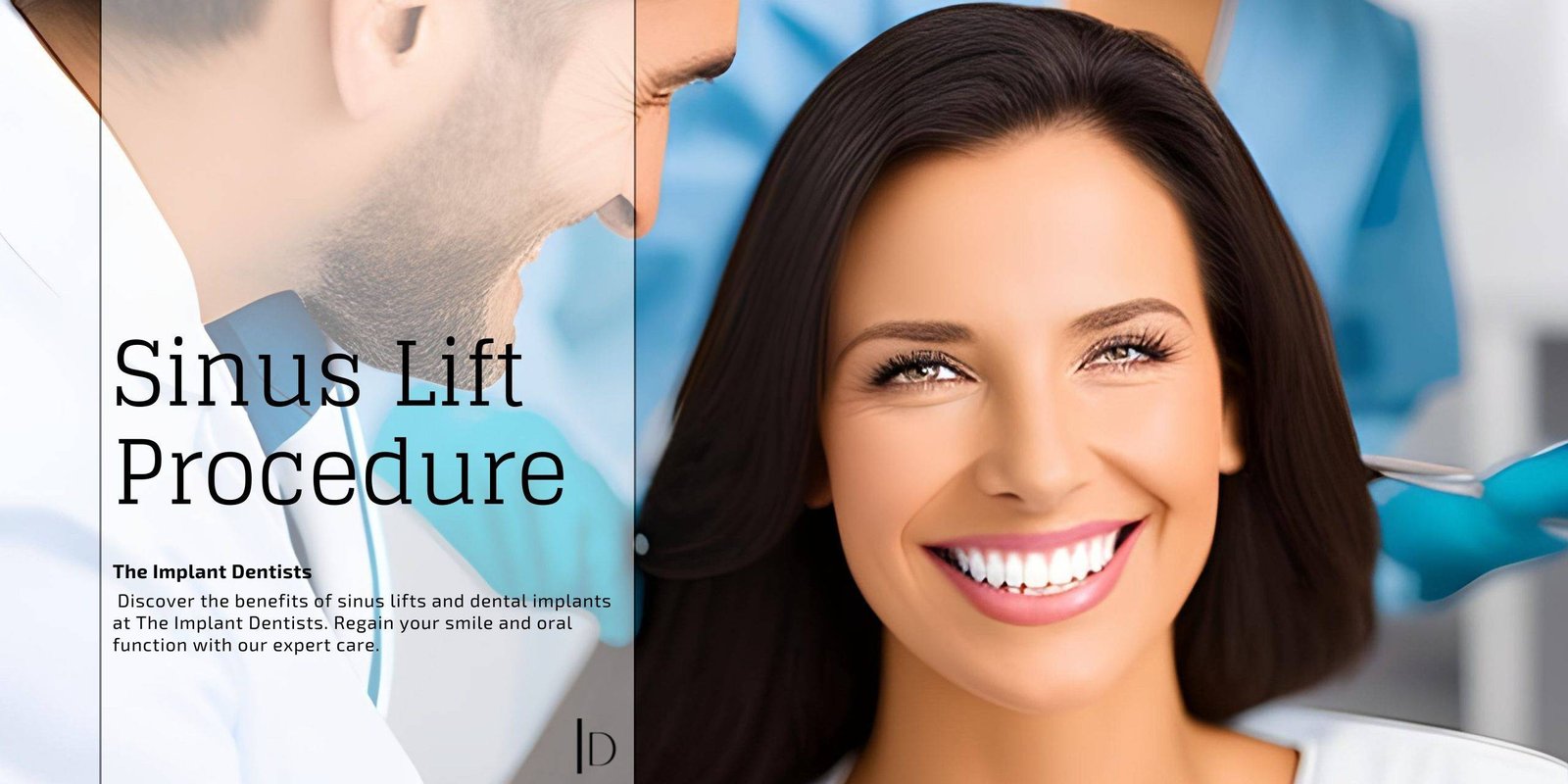
Surgical Preparation for Dental Implant: Sinus Lift Procedure
September 12, 2023Introduction: The Power of Dental Implants in Restorative Dentistry
In the world of restorative dentistry, dental implants have emerged as a revolutionary solution, offering patients the opportunity to regain lost teeth with unmatched stability and natural aesthetics. However, when it comes to the upper jaw, certain challenges can surface due to the presence of the sinus cavities. This is where sinus lift procedures step in to enhance the feasibility of dental implant placement and ensure a successful outcome.
What is a Sinus Lift?
A sinus lift, scientifically referred to as a sinus augmentation, is a specialized dental procedure aimed at increasing the volume of bone in the upper jaw, specifically in the premolar and molar regions. This procedure becomes necessary when the natural bone has deteriorated over time, leaving insufficient height for stable dental implant placement.
The Sinus Lift Procedure Unveiled
The sinus lift procedure involves a series of meticulous steps that culminate in the creation of a strong foundation for dental implants. Here’s a detailed breakdown of what happens during this transformative process:
1. Accessing the Sinus Membrane
The first step in a sinus lift procedure is to create a small incision in the gum tissue, providing access to the sinus membrane. This membrane separates the oral cavity from the sinus cavity.
2. Gently Lifting the Membrane
With precision and care, the sinus membrane is gently lifted away from the jawbone. This delicate manoeuvre creates a space that will soon be filled with bone graft material.
3. Bone Graft Material Placement
In the space created by lifting the sinus membrane, bone graft material is meticulously placed. This material serves as a scaffold for the growth of new bone over time.
4. Integration of Graft with Existing Bone
Over a period of several months, the bone graft material integrates with the existing bone. This fusion results in a solid and robust foundation for the subsequent placement of dental implants.
When is a Sinus Lift Recommended?
Sinus lift procedures are typically recommended in specific scenarios where the upper jaw has experienced bone loss, making it challenging to securely place dental implants. Here are some common situations that warrant a sinus lift:
1. Long-term Tooth Loss in the Upper Back Teeth
Long-term tooth loss in the upper back teeth can lead to bone deterioration over time. A sinus lift becomes crucial in such cases to rebuild the bone structure and provide stability for dental implants.
2. Anatomically Low Sinus Position
In some individuals, the sinus cavity may have an anatomically low position, reducing the available height of bone in the upper jaw. A sinus lift is necessary to create the required bone height for implant placement.
3. Natural Bone Resorption Following Tooth Extraction
After tooth extraction, natural bone resorption can occur, leading to a decrease in bone volume. To counter this, a sinus lift is often recommended to restore the lost bone and enable successful implant placement.
The Benefits of Sinus Lift and Implants
Sinus lifts and dental implants offer a multitude of advantages that go beyond restoring a missing tooth. Let’s delve into the remarkable benefits they bring to the table:
1. Enhanced Chances of Implant Success
A sinus lift plays a pivotal role in ensuring that dental implants have adequate bone support. This significantly increases the likelihood of successful integration and long-term stability.
2. Restored Functionality
Dental implants, when placed in the upper jaw following a sinus lift, restore not only your smile but also your ability to chew efficiently. Enjoy your favourite foods without worry or discomfort.
3. Improved Aesthetics
Dental implants, supported by a healthy bone foundation, closely mimic the appearance of natural teeth. This contributes to an attractive smile that boosts your confidence.
4. Preservation of Facial Structure
Beyond aesthetics, dental implants also stimulate bone growth, preventing further bone loss. This preservation of facial structure safeguards against the potential changes caused by missing teeth.
Conclusion: Your Path to Dental Implants Starts Here
If you’re considering dental implants to regain your smile and oral functionality, The Implant Dentists is your trusted partner on this journey. Our team, led by Dr. Kalpesh, specializes in sinus lift procedures and dental implant placement. Contact us today to schedule a consultation and determine which procedures are best suited to meet your unique needs.
In summary, dental implants have revolutionized restorative dentistry, offering patients the prospect of regaining lost teeth with remarkable stability and natural aesthetics. Sinus lift procedures are the key to overcoming challenges in the upper jaw, ensuring the successful placement of dental implants. If you’re ready to embark on your journey to a confident smile and improved oral function, the path begins with a consultation at The Implant Dentists. Don’t let missing teeth hold you back – take the first step towards a brighter, more vibrant smile today.

What to Look for in a Centre for Implant Dentistry: A Guide for UK Residents
August 28, 2023Are you considering getting dental implants in the UK? The journey to a confident smile and improved oral health begins with choosing the right centre for implant dentistry. With the myriad of options available, it’s important to know what to look for to ensure you receive the highest quality care. In this guide, we’ll walk you through the key factors to consider when selecting a centre for implant dentistry in the UK.
Expertise and Qualifications of the Dental Professionals
The first and foremost aspect to consider is the expertise of the dental professionals at the centre. Dental implant procedures require specialized training and experience. Look for a centre that boasts a team of qualified implant dentists and oral surgeons. Check their credentials, education, and any affiliations with professional bodies such as the British Society of Oral Implantology (BSOI) or the Association of Dental Implantology (ADI). These affiliations can indicate their commitment to staying updated with the latest advancements in implant dentistry.
Comprehensive Services
When choosing a centre for implant dentistry, it’s beneficial to select one that offers a wide range of services beyond just implant placement. Pre-implant assessments, digital scanning, 3D imaging, bone grafting, and post-implant care are all crucial components of a successful implant journey. A centre that provides comprehensive services under one roof can streamline the process, ensuring continuity of care and convenience for you.
Advanced Technology and Techniques
Implant dentistry has come a long way, thanks to advancements in technology and techniques. Look for a centre that embraces modern technologies such as digital impressions, computer-guided implant placement, and minimally invasive procedures. These technologies not only enhance the precision of the treatment but also contribute to a more comfortable experience and faster recovery.
Patient-Centred Approach
A patient-centred approach is key to a positive dental implant experience. Seek a centre where the staff listens to your concerns, answers your questions, and involves you in the treatment planning process. Transparent communication and personalized treatment plans ensure that your unique needs and preferences are taken into account every step of the way.
Positive Reviews and Testimonials
Online reviews and testimonials from previous patients can provide valuable insights into the quality of care a centre for implant dentistry offers. Look for consistent positive feedback regarding the professionalism of the staff, the success of the procedures, and the overall patient experience. Keep in mind that a few negative reviews are normal, but the overall trend should be positive.
Clean and Modern Facilities
The environment in which your dental implant procedure takes place matters. A clean and modern facility not only ensures your safety but also contributes to your comfort. When visiting potential centres, take note of the cleanliness of the clinic, the state of the equipment, and the overall ambiance.
Clear Pricing and Financing Options
Dental implant procedures can be an investment in your oral health and confidence. It’s important to choose a centre that offers transparent pricing, breaks down the costs involved, and discusses potential financing options. This clarity helps you make an informed decision based on your budget.
Location and Accessibility
Consider the location of the centre for implant dentistry and its accessibility. A conveniently located centre can save you time and make it easier to attend appointments, especially if you need multiple visits during your treatment journey.
Conclusion
Choosing the right Centre for Implant Dentistry in the UK is a crucial step towards achieving a beautiful and healthy smile. Prioritize expertise, comprehensive services, advanced technology, patient-centred care, positive reviews, modern facilities, transparent pricing, and convenient location when making your decision. By taking these factors into account, you’ll be well on your way to selecting a centre that can provide you with exceptional implant dentistry services.
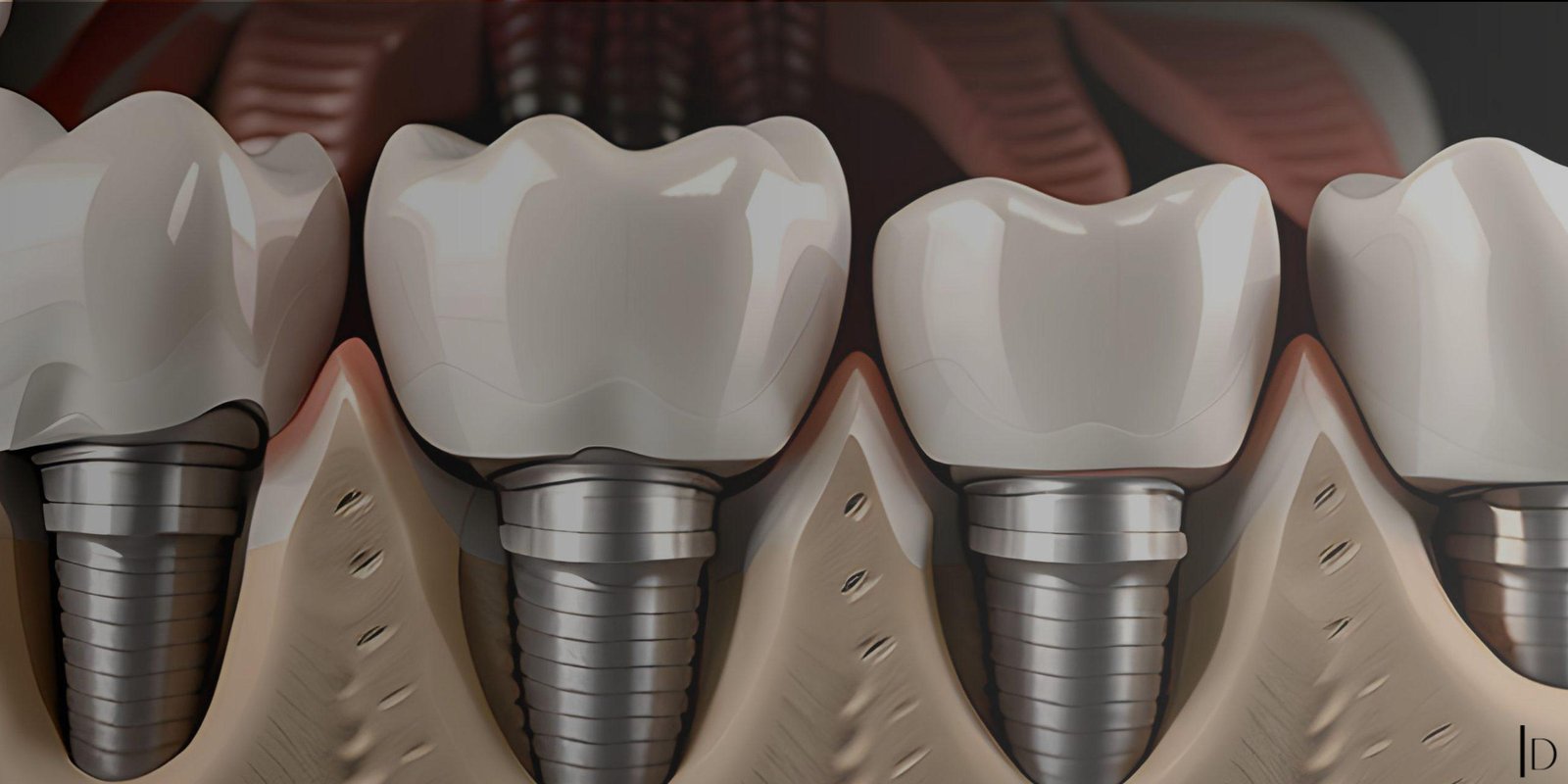
How Conventional Bridge Dental Work Can Transform Your Appearance
August 21, 2023Rediscovering Your Smile Through Conventional Bridge Dental Work
Your smile is one of the first things people notice about you. It plays a crucial role in creating a positive first impression. However, dental issues such as missing teeth can significantly impact your confidence and overall appearance. Conventional bridge dental work offers a tried-and-true solution to restore your smile’s brilliance and transform your appearance, boosting both your self-esteem and oral health.
Understanding Conventional Bridge Dental Work
Dentists commonly perform conventional bridge dental work to replace one or more missing teeth. It involves creating a “bridge” using dental crowns and artificial teeth to fill the gaps left by missing teeth. The adjacent natural teeth or dental implants anchor the bridge, creating a seamless and functional restoration.
The Aesthetic Benefits of Conventional Bridge Dental Work
- Enhanced Smile Aesthetics: Missing teeth can lead to a sunken appearance and a lack of facial symmetry. Conventional bridge dental work restores the natural contours of your face. The bridge revitalising your appearance and giving you a more youthful look.
- Improved Confidence: Regaining a complete and beautiful smile can do wonders for your self-confidence. With conventional bridge dental work, you can smile, speak, and eat with confidence, knowing that your dental issues are no longer a cause for concern.
- Natural-Looking Results: Dental technology has come a long way, and modern bridges are designed to closely mimic the appearance of natural teeth. The materials used in bridge construction can be colour-matched to your existing teeth, ensuring a seamless integration that is virtually indistinguishable from your real teeth.
Functional Advantages of Conventional Bridge Dental Work
- Restored Chewing and Speaking: Missing teeth can make chewing and speaking difficult, affecting your quality of life. Conventional bridges not only improve aesthetics but also restore your ability to enjoy a wide range of foods and communicate clearly.
- Preserved Oral Health: Gaps left by missing teeth can lead to oral health issues such as shifting teeth, bone loss, and gum problems. By filling these gaps with a bridge, you maintain the integrity of your oral structures. You prevent potential complications in the future.
The Conventional Bridge Procedure
- Consultation and Examination: Your dentist will conduct a thorough examination of your oral health and discuss your treatment options. If bridge dental work is deemed suitable, the treatment plan will be outlined.
- Preparation: We remove a small amount of enamel from the adjacent teeth to the gap to accommodate the dental crowns that will support the bridge.
- Impressions and Temporary Bridge: Impressions of your teeth are taken to create a custom bridge. While the permanent bridge is being fabricated, a temporary bridge is placed to protect your exposed teeth.
- Fitting and Finalization: Once the permanent bridge is ready, it is carefully fitted and adjusted for comfort and proper alignment. Your dentist ensures that the bridge fits seamlessly with your bite and natural teeth.
- Long-Term Care: Proper oral hygiene and regular dental check-ups are essential to maintain the longevity of your bridge and overall oral health.
Transforming Lives, One Smile at a Time
Conventional bridge dental work is not just about restoring missing teeth; it’s about transforming lives. By addressing both the aesthetic and functional aspects of tooth loss. This procedure can boost your confidence, improve your oral health, and rejuvenate your overall appearance. If you’re looking for a reliable and proven solution to missing teeth, consider the transformative power of conventional bridge dental work and embark on a journey to rediscover your radiant smile.
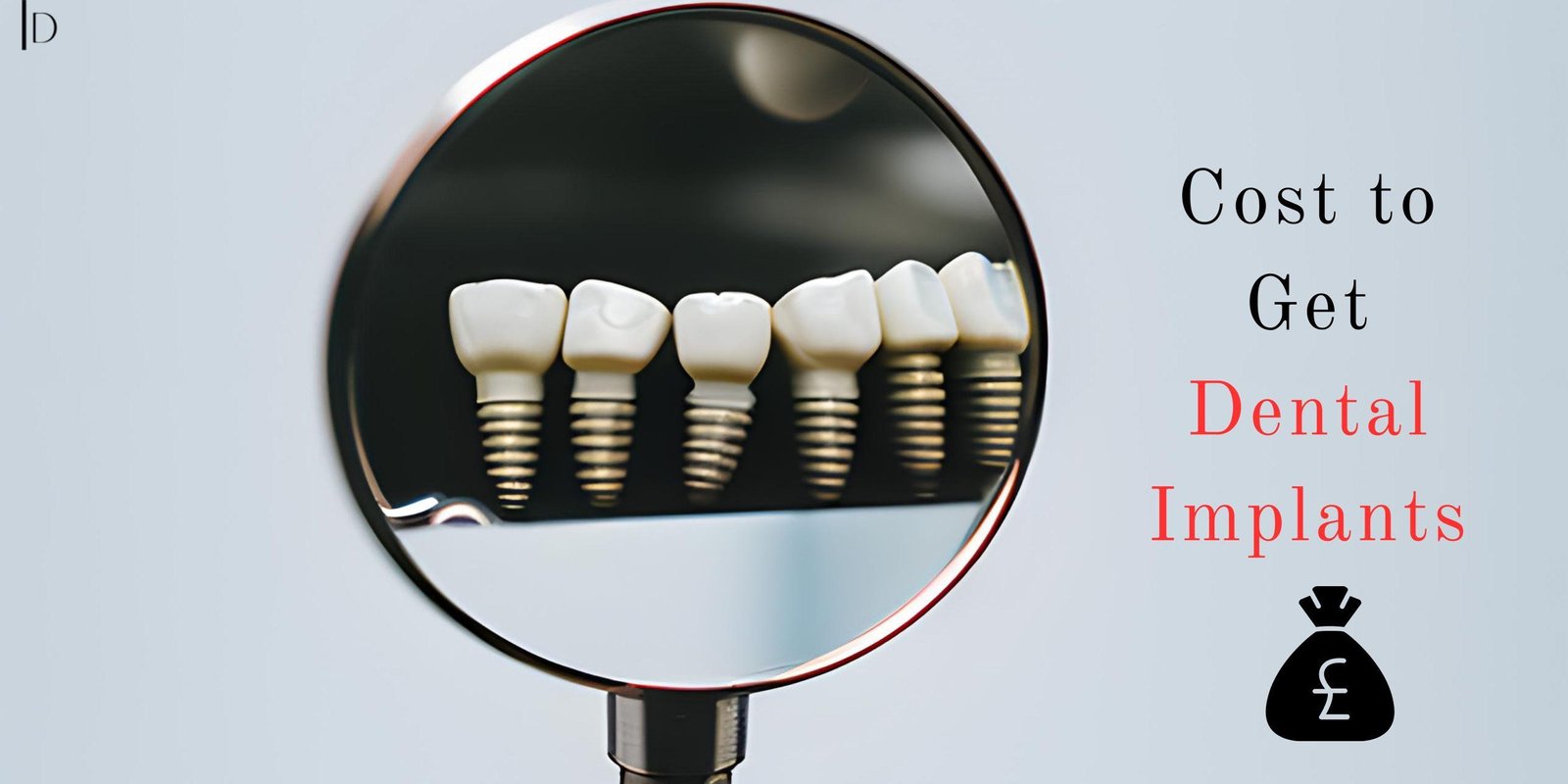
How Much Does It Cost to Get Dental Implants?
August 14, 2023When it comes to restoring a beautiful smile and maintaining optimal oral health, dental implants have emerged as a popular and effective solution. Whether you’ve lost a tooth due to an accident, injury, or other reasons, dental implants can provide a lifelike replacement that feels and functions just like a natural tooth. However, one important question that often arises is, “How much does it cost to get dental implants?” In this article, we’ll delve into the various factors that influence the cost of dental implants, allowing you to make an informed decision about this valuable investment in your oral well-being.
Understanding Dental Implants: A Brief Overview
Before delving into the cost considerations, let’s briefly understand what dental implants are. Dental implants are titanium posts that are surgically implanted into the jawbone to replace missing teeth. Over time, the implant fuses with the bone, providing a sturdy foundation for attaching custom-made crowns that resemble natural teeth.
Factors Influencing the Cost of Dental Implants
- Number of Implants: The number of dental implants required significantly impacts the overall cost. Whether you need a single implant or multiple implants will directly influence the final expense.
- Type of Restoration: The type of restoration placed on the implant also affects costs. While a single crown is less expensive than a full arch of replacement teeth, it’s essential to consider your specific needs and preferences.
- Location: The cost of dental implants can vary based on your geographic location. Dental services in metropolitan areas tend to be pricier than in rural areas due to differences in overhead costs.
- Expertise of the Dental Professional: The skill and experience of the dentist or oral surgeon performing the procedure will impact the cost. Highly experienced professionals may charge more for their services.
- Preparatory Procedures: In some cases, preparatory procedures like bone grafting or sinus lifts might be necessary to ensure a successful implant placement. These procedures can add to the overall cost.
- Material Quality: The quality of materials used for the implant and restoration can affect the cost. While higher quality materials may be more expensive upfront, they often provide better long-term results.
Is It Worth the Investment?
While dental implant may seem like a significant investment upfront, it’s important to consider the long-term benefits. It offer improved oral functionality, aesthetics, and comfort compared to other tooth replacement options. They also have a remarkable success rate and can last a lifetime with proper care. Investing in dental implant means investing in your oral health and quality of life.
Insurance and Financing Options
Many dental insurance plans do not fully cover the cost of dental implant, but some may offer partial coverage. It’s crucial to check with your insurance provider to understand what is covered under your plan. Additionally, many dental offices offer financing options, allowing you to spread out the cost over time.
Final Thoughts
When contemplating the costs of dental implants, it’s important to remember that you’re not just paying for a tooth replacement; you’re investing in your confidence, oral health, and overall well-being. While the initial cost may seem daunting, the benefits and longevity of dental implants often outweigh the expenses. To get an accurate estimate for your specific situation, consult with a dental professional who can provide personalised recommendations and a detailed cost breakdown. Remember, a healthy, confident smile is truly priceless.
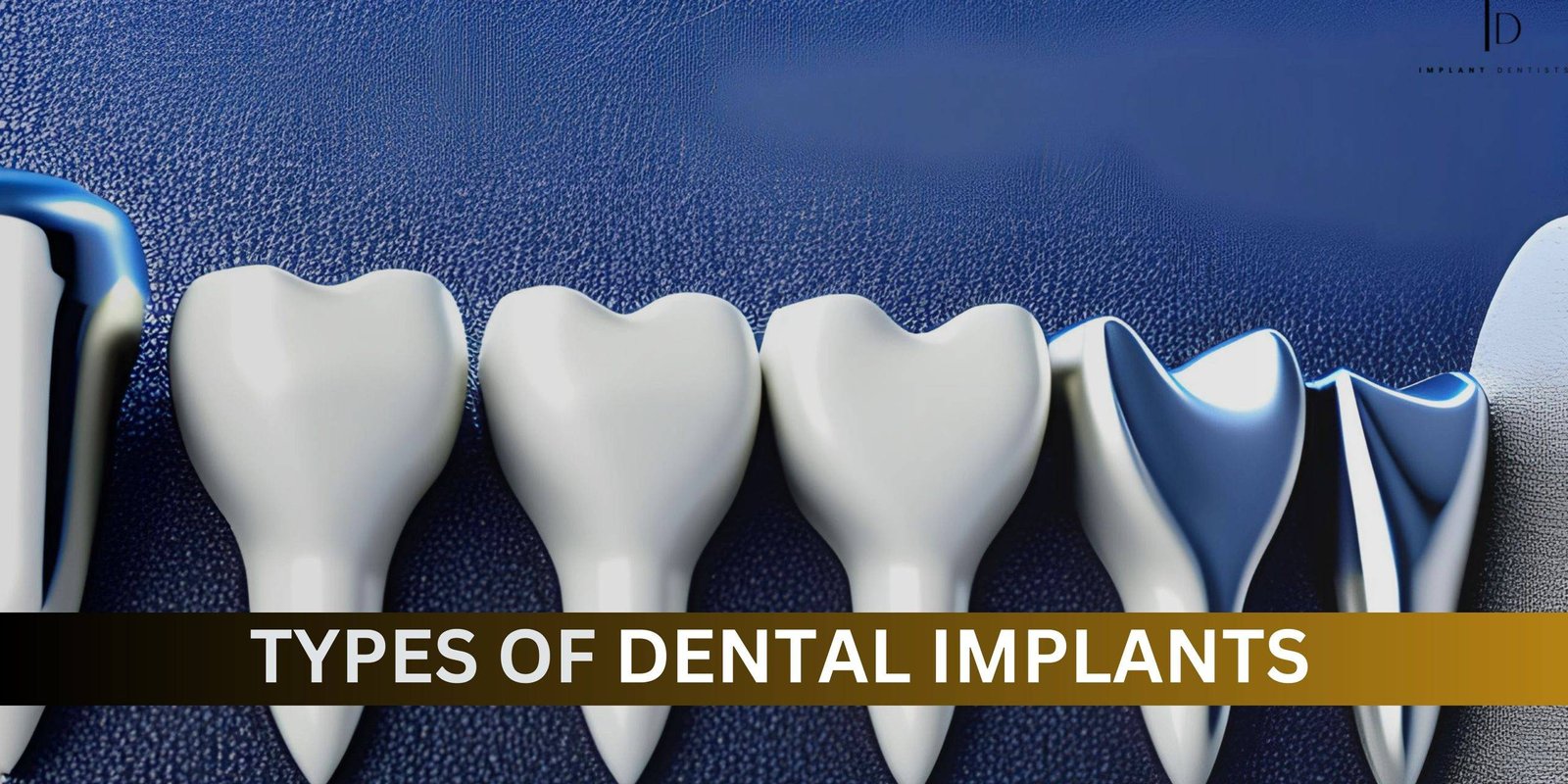
Different Types of Dental Implants: Which One is Right for You?
July 17, 2023When it comes to restoring missing teeth, dental implants have revolutionised the field of dentistry. They provide a durable and natural-looking solution that can significantly enhance your smile and improve your oral health. However, not all dental implants are the same. In this blog, we will explore the different types of dental implants available, helping you understand which one may be the right choice for you.
Understanding Dental Implants
Before diving into the specific types of dental implants, it’s important to have a basic understanding of what they are and how they work. Dental implants are artificial tooth roots made of titanium that are surgically placed into the jawbone. They serve as a foundation for replacement teeth, such as crowns, bridges, or dentures. Dental implants provide a stable and long-lasting solution, mimicking the function and appearance of natural teeth.
Traditional Implants
Traditional dental implants, also known as standard implants, are the most common type of dental implants used today. They consist of two main components: the implant itself, which is surgically placed into the jawbone, and the abutment, which connects the implant to the replacement tooth. Traditional implants are versatile and can be used to replace a single tooth, multiple teeth, or even a full arch of teeth.
Mini Implants
Mini implants are smaller in diameter compared to traditional implants. They are an alternative for patients who have limited bone density or require less invasive treatment. Mini implants can often be placed without the need for bone grafting, making them a suitable option for those with insufficient jawbone structure. While they may not be as versatile as traditional implants, mini implants can effectively support single-tooth restorations and stabilise dentures.
All-on-4 Implants
All-on-4 implants, as the name suggests, are designed to replace a full arch of teeth with just four implants. This innovative technique maximises the use of available bone and eliminates the need for individual implants for each missing tooth. All-on-4 implants offer a quicker treatment process and are an excellent option for patients who have experienced significant tooth loss or have inadequate bone volume.
Immediate Load Implants
Immediate load implants, also known as same-day implants, allow for the placement of a temporary tooth or restoration immediately after the implant surgery. This means that patients can leave the dental office with a functional tooth on the same day. Immediate load implants can be advantageous for individuals who want to avoid the inconvenience of a waiting period between implant placement and receiving their final restoration.
Zygomatic Implants
Zygomatic implants are an advanced option for patients who have severe bone loss in the upper jaw. Instead of being anchored in the jawbone, zygomatic implants are anchored in the zygomatic bone, which is denser and provides a secure foundation for the implant. This type of implant eliminates the need for bone grafting procedures, making it a viable solution for individuals with significant bone resorption.
Choosing the Right Dental Implant
Selecting the right dental implant depends on various factors, including your oral health, bone structure, and specific lost tooth replacement needs. It is essential to consult with a qualified dentist or oral surgeon who specialises in implant dentistry. They will evaluate your unique situation, perform necessary examinations, and recommend the most suitable implant option for you.
Conclusion
In conclusion, dental implants offer a reliable and aesthetically pleasing solution for individuals with missing teeth. Whether you require a single tooth replacement or a full arch restoration, there are various types of dental implants available to suit your specific needs. By consulting with a dental professional and considering factors such as bone density, oral health, and desired outcome, you can determine which type of dental implant is right for you. Remember, choosing the right implant is a crucial step towards achieving a beautiful and functional smile that can last a lifetime.
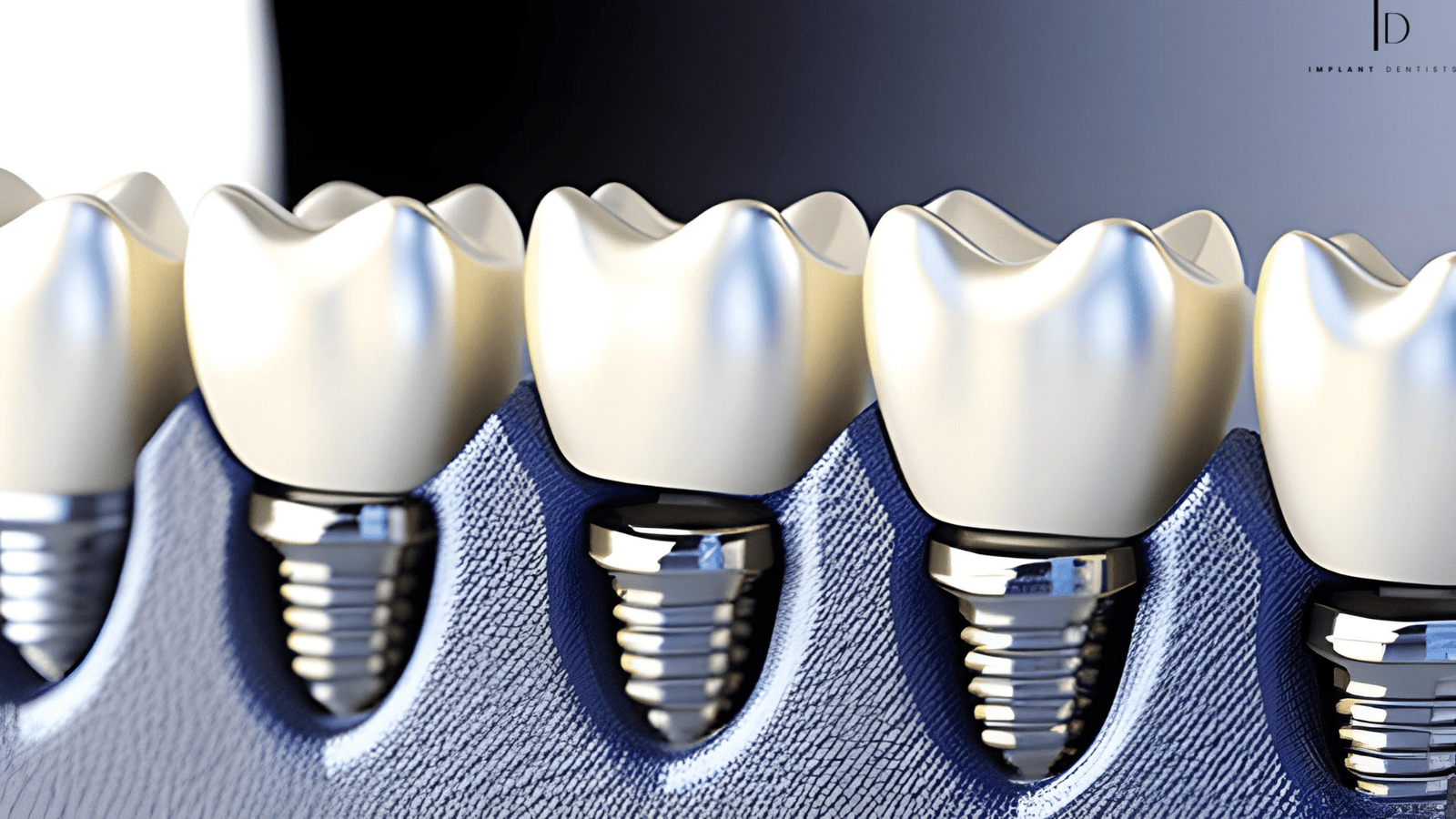
The Science Behind Dental Implants: Unveiling the Technology and Techniques
June 27, 2023Dental implants have transformed dentistry by offering a durable and practical replacement for lost teeth. This article aims to delve into the science behind dental implants, shedding light on the technology and techniques involved. By understanding the intricate processes and advancements in this field, patients can make informed decisions about their dental health and regain their smiles with confidence.
Understanding Dental Implants:
Artificial tooth roots called dental implants are inserted into the jawbone surgically. Composed of biocompatible materials, typically titanium, they fuse with the bone to provide a stable foundation for replacement teeth. This process is called osseointegration and is a critical factor in the success of dental implant procedures.
Implant Design and Materials:
Implants are meticulously designed to mimic the natural tooth structure. They consist of three main parts: the implant fixture, abutment, and prosthetic crown. The implant fixture serves as the artificial root, while the abutment acts as a connector between the fixture and crown. Different materials, such as titanium and ceramic, use for dental implants, each offer unique advantages.
Osseointegration – The Key to Success:
The success of dental implants lies in the process of osseointegration. Once the implant is placed, it integrates with the surrounding bone over time. The implant’s surface texture and structure play a crucial role in promoting osseointegration by enhancing bone cell attachment and growth. Recent advancements in implant surface technologies, such as nanostructures and coatings, have significantly improved osseointegration rates.
Computer-Aided Implant Placement:
Technological advancements have revolutionised dental implant procedures. Computer-aided implant placement techniques utilise advanced imaging technologies, such as cone-beam computed tomography (CBCT), to create detailed 3D models of the patient’s jaw. This enables dentists to plan the optimal placement of implants with precision, minimising risks and ensuring optimal functional and aesthetic outcomes.
Guided Implant Surgery:
Guided implant surgery combines computer-aided design and manufacturing (CAD/CAM) technologies with real-time surgical guidance. Using the 3D models, a surgical guide is created, which aids in accurate implant placement. This approach improves the efficiency and predictability of the surgery, reduces patient discomfort, and enhances overall treatment outcomes.
Immediate Implant Placement and Loading:
Dental professionals can place dental implants immediately after tooth extraction in certain cases. This approach, known as immediate implant placement, reduces treatment time and preserves the surrounding bone and soft tissue. With advancements in implant design and techniques, immediate loading of a temporary or permanent prosthesis onto the implant is also possible, providing patients with immediate aesthetic and functional benefits.
Advancements in Implant Materials and Surface Modifications:
Ongoing research and development have led to the emergence of new implant materials and surface modifications. Materials such as zirconia, a strong ceramic, offer excellent aesthetics and biocompatibility. Surface modifications, including nanotopography and bioactive coatings, aim to enhance osseointegration and promote faster healing.
Conclusion:
Dental implants have transformed the way we approach tooth replacement, combining scientific principles with technological advancements. The science behind single or full jaw dental implants, including osseointegration, implant design, computer-aided techniques, and material innovations, continues to evolve, offering patients improved treatment outcomes and long-term success. By understanding these advancements, individuals can make informed decisions about dental implant procedures, ultimately restoring their smiles and improving their quality of life.
